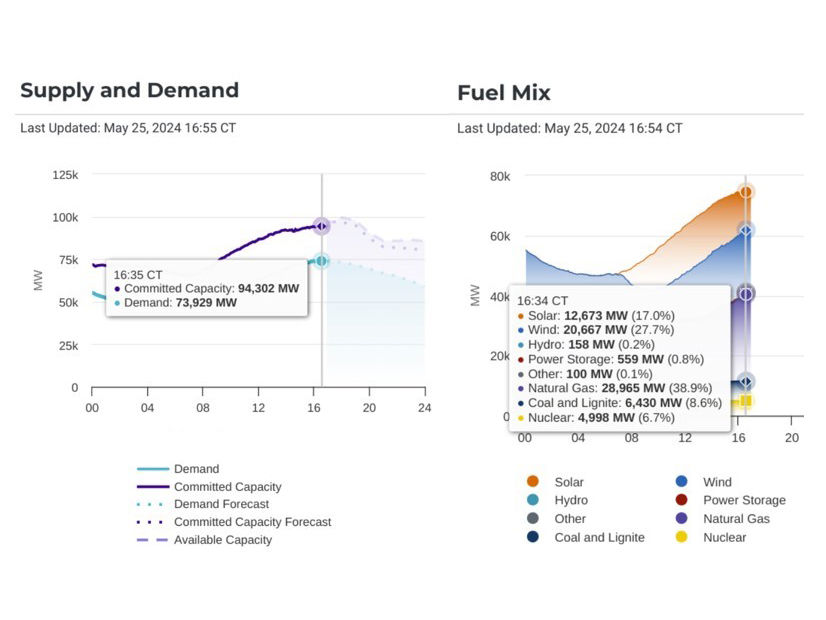[EDITOR’S NOTE: This story has been updated to reflect ERCOT’s new unofficial peak demand record for the month of May, set May 27. The previously reported mark for the day was 73.75 GW.]
ERCOT’s latest capacity, demand and reserves (CDR) report projects summer peak demand will increase to more than 97 GW by 2034, assuming normal weather conditions.
However, the weather has been anything but normal recently in Texas. ERCOT is coming off the second-hottest summer in state history, and it just set an unofficial peak demand record for May (77.13 GW) that exceeds the grid operator’s all-time peak from 2018 (73.47 GW).
The heat index hit 113 degrees Fahrenheit in Austin on May 25 and has already hit triple digits in Houston, where the low temperature dropped to only 80 degrees on May 21. That is about a month and a half ahead of normal, according to a local forecaster.
The National Oceanic and Atmospheric Administration (NOAA) has predicted an “above-average” hurricane season this year, with between 17 and 25 named storms. It says “extraordinarily high, record-warm water temperatures” in the Atlantic Ocean, linked to climate change, are energizing the waters and fueling storm development.
NOAA said another factor influencing this year’s hurricane season is La Niña, a climate pattern that cools surface ocean temperatures and lessens wind speeds, allowing more storms to develop.
The CDR report forecasts peak demand of 83.29 GW this summer, assuming normal weather conditions. Demand is expected to exceed 84 GW in 2026, 86 GW in 2028 and 90 GW in 2030, according to the report.
Energy consultant and Stoic Energy principal Doug Lewin doesn’t think that is enough. He says ERCOT still doesn’t factor climate change into its projections, and he noted the ISO’s current record for peak demand is 85.46 GW, registered last August.
“They only expected 73 GW this month and we’ve already passed that. Had this heat hit outside a holiday weekend, we’d likely be around 80 GW,” he said on X, the social media platform formerly known as Twitter.
ERCOT says its load forecasts are based on normal weather conditions and determined by the methodologies posted to its website. Staff forecasts scenarios through 2033 using a model with historical weather years.
The CDR report is designed to provide forecasted planning reserve margins (PRMs) for ERCOT’s summer (June-September) and winter (December-February) peak-load seasons. The ISO says it is not intended to characterize the risk of scarcity conditions from a real-time operations perspective. It defines the PRM as the percentage of capacity above firm demand that is available to cover uncertainty in future demand, generator availability and new resource supply.
ERCOT’s operational capacity exceeds 100 GW next year but increases to only 101.50 GW by 2033. However, the CDR report indicates the grid operator expects 30 GW of planned capacity by that same time, with solar resources accounting for 28 GW.


